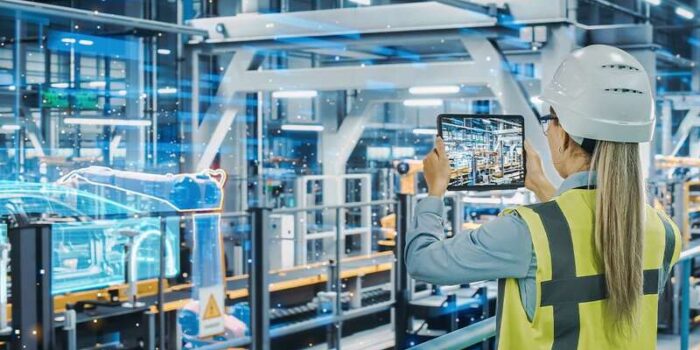In recent years, the term “Machine Learning” has become ubiquitous across industries, from healthcare to finance, from retail to entertainment. Its presence permeates our daily lives, influencing the way we interact with technology and shaping the future of innovation. But what exactly is machine learning, and why is it so significant?
Understanding Machine Learning:
At its core, machine learning is a subset of artificial intelligence (AI) that enables systems to learn and improve from experience without being explicitly programmed. Instead of relying on traditional rule-based programming, where humans meticulously instruct computers on how to perform tasks, machine learning algorithms sift through data, identify patterns, and make predictions or decisions based on these patterns.
The essence of machine learning lies in its ability to iterate and improve over time. As more data becomes available and algorithms are refined, systems become increasingly adept at recognizing patterns and making accurate predictions. This iterative process is what distinguishes machine learning from traditional computing methods, allowing for adaptive, self-learning systems.
Applications Across Industries:
The applications of this are vast and diverse, with virtually limitless potential to transform industries and improve processes. In healthcare, machine learning algorithms analyze medical data to assist in disease diagnosis, predict patient outcomes, and personalize treatment plans. This not only enhances the efficiency of healthcare delivery but also improves patient care and saves lives.
In finance, this models are employed for fraud detection, risk assessment, and algorithmic trading. By analyzing vast amounts of financial data in real time, these models can identify suspicious activities, mitigate risks, and optimize investment strategies with unparalleled speed and accuracy.
The retail sector harnesses machine learning to enhance customer experiences through personalized recommendations, dynamic pricing, and demand forecasting. By analyzing consumer behavior and market trends, retailers can tailor their offerings to individual preferences, optimize pricing strategies, and streamline inventory management.
In manufacturing, machine learning algorithms optimize production processes, predict equipment failures, and improve quality control. By analyzing sensor data from machines and production lines, manufacturers can identify inefficiencies, minimize downtime, and optimize resource allocation, leading to increased productivity and cost savings.
Challenges and Ethical Considerations:
While the potential benefits of this are vast, they are accompanied by challenges and ethical considerations. One of the primary challenges is the need for vast amounts of high-quality data to train this model effectively. Without sufficient data, models may produce inaccurate or biased results, undermining their reliability and effectiveness.
Ethical considerations also arise regarding the use of this in decision-making processes. Particularly in sensitive areas such as criminal justice and hiring. Biases present in training data can lead to algorithmic discrimination, perpetuating existing inequalities and injustices. Ensuring fairness, transparency, and accountability in this systems is essential to mitigate these risks and uphold ethical standards.
The Future of Machine Learning:
As technology continues to evolve, the future of machine learning holds tremendous promise. Advancements in areas such as deep learning, reinforcement learning, and natural language processing are pushing the boundaries of what is possible, enabling machines to perform increasingly complex tasks and interact with humans more intuitively.
Furthermore, the proliferation of data and computing power is fueling innovation and driving the adoption of machine learning across industries. From autonomous vehicles to virtual assistants, from medical diagnosis to environmental monitoring, the potential applications of this are vast and far-reaching.
Conclusion
In conclusion, this represents a paradigm shift in the way we approach problem-solving and decision-making. By harnessing the power of data and algorithms, this has the potential to revolutionize industries, redefine possibilities, and shape the future of technology in ways we are only beginning to imagine. However, realizing this potential requires careful consideration of ethical implications, investment in research and development, and collaboration across disciplines to ensure that this benefits society as a whole.





